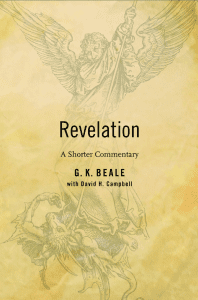 David DeSilva, in a classy little book on the Book of Revelation (Unholy Allegiances: Heeding Revelation’s Warning), explores the major themes at work in this book, themes almost always ignored by the most popular literature about Revelation. DeSilva explores Roman imperialism, John’s powerful critique of the public story, the seven oracles to the seven churches of Asia, and the centrals ideas about Jesus Christ in the Book of Revelation.
David DeSilva, in a classy little book on the Book of Revelation (Unholy Allegiances: Heeding Revelation’s Warning), explores the major themes at work in this book, themes almost always ignored by the most popular literature about Revelation. DeSilva explores Roman imperialism, John’s powerful critique of the public story, the seven oracles to the seven churches of Asia, and the centrals ideas about Jesus Christ in the Book of Revelation.
No you won’t find timelines, nor questions about “Is this about the USA?” or “Is that about the modern State of Israel?” Instead, you will find a serious, readable, and church-group accessible study of Revelation. (And I hope churches will take this book seriously enough to get groups to study it.)
I begin this series on David’s book with three myths about Revelation:
But first a question: What “myths” do you think need to be announced about reading the Book of Revelation?
#1: Revelation is about us.
The first principle for Bible reading is that it was first for them, the original audience. Begin there. John wrote this book to seven real churches in the 1st Century.
#2: What Revelation reveals is our future.
It opens with the word “prophecies” (Rev 1:3). Prophecy as prediction leads to three approaches: historicist, futurist, and preterist (all 1st Century stuff). If prophecies are not predictions so much as word-of-God to those churches, this whole approach is shelved. They are oracles to those seven churches. They were designed to evoke response to God, not reveal secrets about the future.
#3: Revelation is written in mysterious code.
But John says the book is a “revelation” or an “unveiling” or an “apocalypse,” which means now the truth can be known (not, now I’ll muddle things up with clever symbols). David’s right; this book was meant to be understood and it was — by author and audience. The book lifts the veil on what’s happening then … that is, it opens up the curtain for all to see what’s really going on on Rome’s stage.











